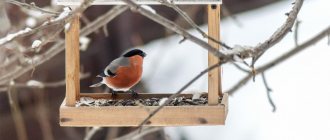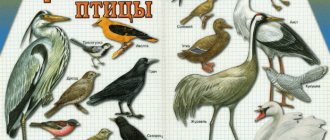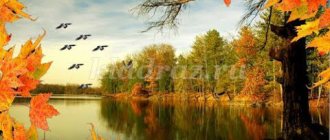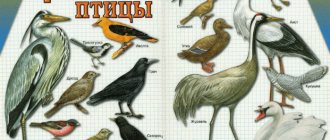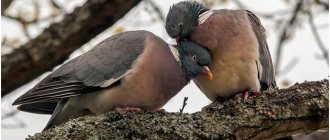Chicks at home
The cuckoo chick fell out of the nest.
Grown cuckoo chicks show interest in the world around them and often fall out of the nest. the lost chicks become prey for mammals, since the adoptive parents do not rush to help.
A selected cuckoo can be raised at home. It is known that
Cuckoos are insectivorous birds. They need to be fed animal food. IN
In the wild, the main diet consists of caterpillars. The young eat a lot and often. IN
per day it eats up to 50 caterpillars. And he asks to eat every half hour. In captivity they cuckoo
fed with mealworms, which are sold in pet stores. If there is no usual
for birds food, then give minced meat mixed with a raw egg, liquid food for
dogs and cats. canned food
The chicks do not care who is their breadwinner. they open their mouths with pleasure as soon as a person approaches.
By the month of life, the chick will learn to get food on its own. As soon as he gets on the wing,
he should be released. As a rule, cuckoos cannot be tamed.
Having matured, the bird will immediately fly away to freedom.
Habitats
On absolutely all continents (the only exception is Antarctica) and in all climatic zones (from cold forest-tundra to hot tropics), most territories are inhabited by cuckoos. Most often these birds can be found in the tropical regions of North America and Eurasia.
Wide distribution is noted from the Atlantic to the Pacific Ocean, in most of Europe, Asia, Japan and the Korean Peninsula, in northern latitudes, on the Kuril Islands and the Commander Islands. Common cuckoos can be found wherever there is woody vegetation.
These birds are migratory. They spend only a few months a year in nesting areas. Cuckoos prefer to winter in Africa, India and Southern China. In this case, the flight length can reach 5-6,000 km.
For settlement, birds prefer deciduous forests, sometimes bushes on rough terrain, shelter belts or island forests in forest-steppe. These birds do not like coniferous forests and taiga.
They can settle in areas that are open on all sides if there are isolated bushes or trees nearby - this can usually be observed in the countries of Central Asia, where there is very little woody vegetation.
Nutrition
The diet of omnivorous cuckoos mainly consists of a variety of organisms, but also includes plant foods. Despite their small size, the birds are very voracious. This is due to the accumulation of subcutaneous fat, necessary for long-distance flights during winter migration.
Their favorite food consists of grasshoppers, grasshoppers, beetles, butterflies, cabbage worms, and small lizards. Cuckoos feast on mosquitoes, ant and bird eggs, pupae, insect larvae, and poisonous hairy caterpillars that other birds avoid. Among plant foods, forest cuckoos prefer berries.
The destruction of huge numbers of insects by birds is an important factor in protecting the ecosystem. Only during the breeding season does the appetite of forest orderlies decrease. The life of a cuckoo bird is filled with active searches for a mate to breed.
Appearance
— Advertising —
Appearance of a cuckoo
The cuckoo has a long, thin body, narrow wings pointed at the end, and a long tail, beveled along the edge in the shape of a wedge. The legs are short, poorly developed, and unsuitable for walking on the ground. The structure of the paws is zygodactyl - two claws look forward, and the other two are turned back. The beak is short, curved downwards.
Sexual dimorphism is expressed in size (males are larger than females) and plumage. Adult males have a gray head, shoulders, and back. The throat and upper chest are ashen. The belly and chest are cream with wide black transverse stripes. The tail feathers are dark gray with white spots and edges.
Photo of a cuckoo on a tree
— Advertising —
The color of females does not always match the plumage of the male. In some species there is a so-called morph, when the back and breast are colored ocher, diluted with black stripes (common, deaf and small cuckoos). There are species that have a solid black chest (a type of black cuckoo).
Enemies
Adults have practically no enemies, thanks to the cuckoo's dexterity in maneuvering and its external similarity to birds of prey. However, cuckoos are afraid of orioles, gray flycatchers, warblers and shrikes - sometimes they attack their chicks, which have just left their foster home. Young cuckoos have weak wings and do not yet have sufficient experience and dexterity.
It is also dangerous for them to let small predators get close to them, but adult individuals extremely rarely become victims of cats or weasels, since they do not approach the ground at all, only to grab their prey.
Crows and jays destroy nests, killing chicks and eating eggs. And this may well turn out to be the nest into which the cuckoo threw its egg, so one cannot assume that the cuckoo chicks are completely safe in someone else’s nest. This is confirmed by the fact that in a season, out of 20 eggs laid by a female cuckoo, only 4-5 chicks survive.
